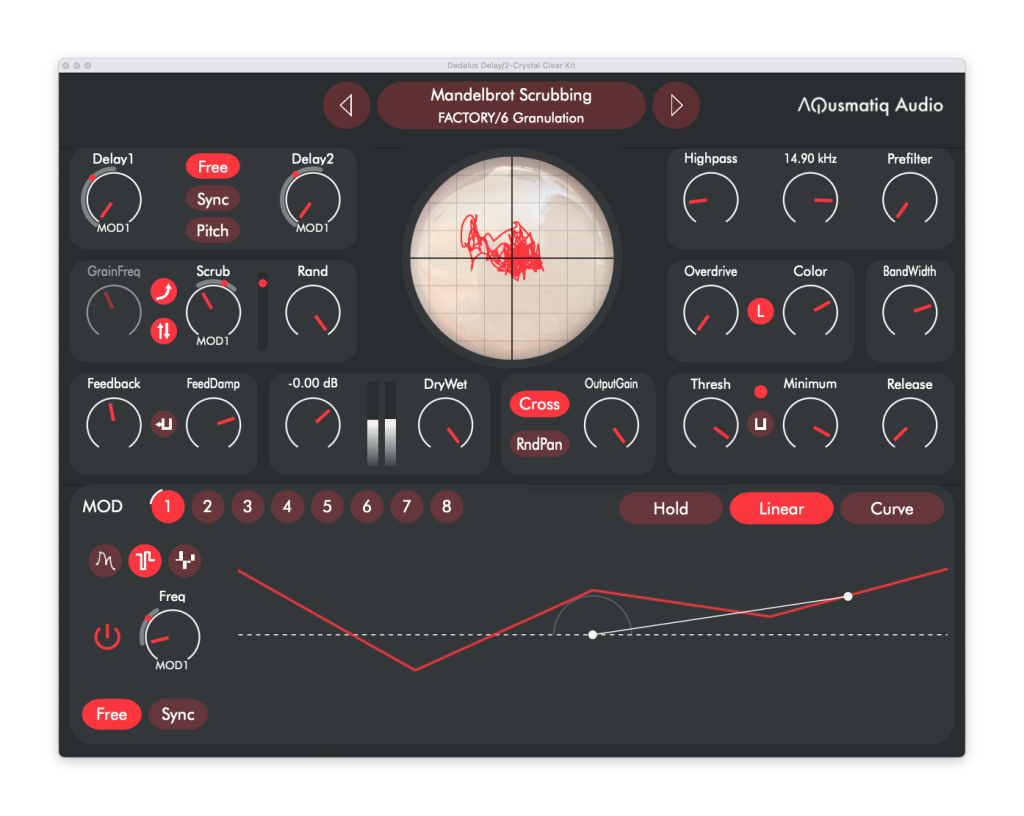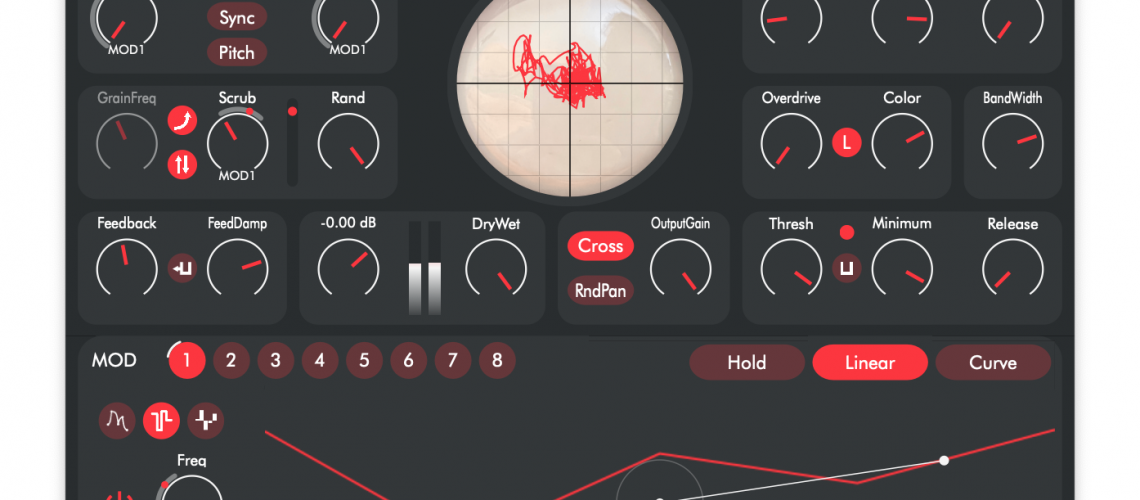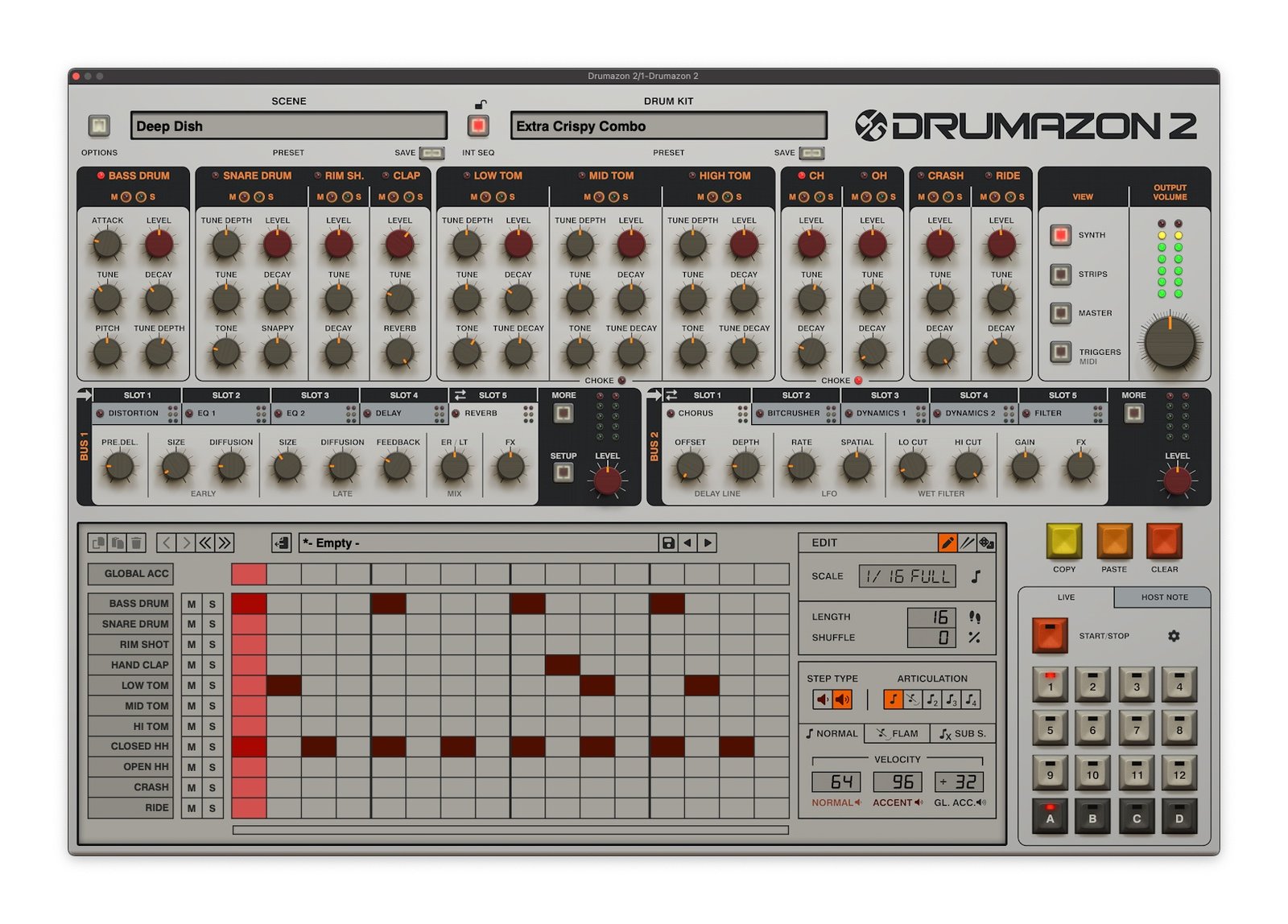It seems to be a season of digital delays, but this is something different. Dedalus is a creation of some beloved devs and experimentalists. They’ve combined delay with distortion, modulation (with drawable curves), and tons of granulation – all in a one-window UI. Calling it a “delay” almost seems like missing the point.
Let me just dial up one preset, put it on an intentionally boring Ableton Live Drum Rack pattern I made with the mouse in about ten seconds, and go a bit nuts. Isotonik Studios have done the work of giving you some sensible sound design. I’d rather go into a wormhole. Like so –
Dedalus Delay is a delay when you want it to be, too, of course – and you have a lot of different effects in that single screen UI. I’m reminded even a bit of Eventide’s excellent “Mangled” effects, in that there’s a combination of distortion and dynamics plus a delay network.
This is a legitimately unique take on this, and it’s great to see this in plug-in form, not just in a Max for Live device. The architecture:
- Network of delay lines + granulator + modulation, routed to –
- Filters, dynamic processors, saturation modes
- Clockable / pitch-able delays
- Feedback up to 200%
- Two cascaded lowpass and highpass filters in the feedback loop
- Overdrive module
- Duck/gate dynamics processor
- 8 modulators, plus the ability for modulators to modulate other modules or themselves
- Multiple modulation shapes and drawable curves
- Drag-and-drop modulation source (tip, just grab one of those numbers at the bottom)

I’m really just showing off that modulating-the-modulators and granulation effects in the video with the Mandelbrot preset. Because you have a delay network with feedback, you can also create reverb-like effects, as well.
The “supergroup” of developers that worked on this is the Italian trio of Diego Capoccitti, Maurizio Giri, and Alessandro Petrolati. Diego has been sharing coding tutorials in JUCE and C++. Maurizio is the person behind Amazing Noises and has a series of Max books. Alessandro is a pianist and the coder behind apeSoft for iOS and Max for Live. The three together have created something that’s the culmination of all those combined years of work.
The Delay runs in free, synced, and pitched modes. In Pitch mode, the delay time is tuned as a pitch period, with MIDI input. (Insert usual request here to support tuning, please! 1.1?)
Delay Modulation gets interesting – it turns the delay into a granulator, with two playheads for each delay line. GrainFreq sets the frequency of grains; Scrub is an LFO oscillating between minimum and maximum delay times with per-grain delay. (So like a lot of granulators lately, that part is not synced, but I think that has to do with the fact that a lot of granulators are better tuned in free-timed mode.)
Rand is actually a little confusing just because this isn’t like other granulators. At 0, it sets the LFO to a sine wave; at 1, it’s a randomized waveform.
Note the two icons in Delay Modulation. (Read the manual on this one, kids!) You can also bypass granulation with the Glide control, and choose effectively a stereo or mono mode by setting the Delay Mod button.
Feedback and FeedDamp control the delay circuit, with Gate/Duck enable/disable.
Overdrive and Color I think are added post-filter. (Overdrive also has a limiter – that’s “L” for limiter not “L” for “left” as I first read it).
Plus you get a really handy Duck/Gate panel with envelope controls. All of these pass the “f** around and find out” UI/UX test – you can really discover stuff just by messing the knobs, assuming my enlightening prose didn’t turn out to be entirely enlightening.
And then there are the Modulators. You’ve got up to 8 of them, which you can then drag and drop onto parameters; shift-click to delete. Drag up and down to set percentage of modulation. Multiple shapes, segmented curves, waveform primitives – I really love this interface.
More on goodness from AVAL in a bit, as I’ve also been testing the lovely Piastrone. Don’t – or rather, do touch that dial.
This is really a bargain buy, which a launch price of€18.84 including VAT before the final price of €48.59.
Closing us out, here are some more demos from Isotonik. It’s really great to see them venturing outside only Max for Live:




